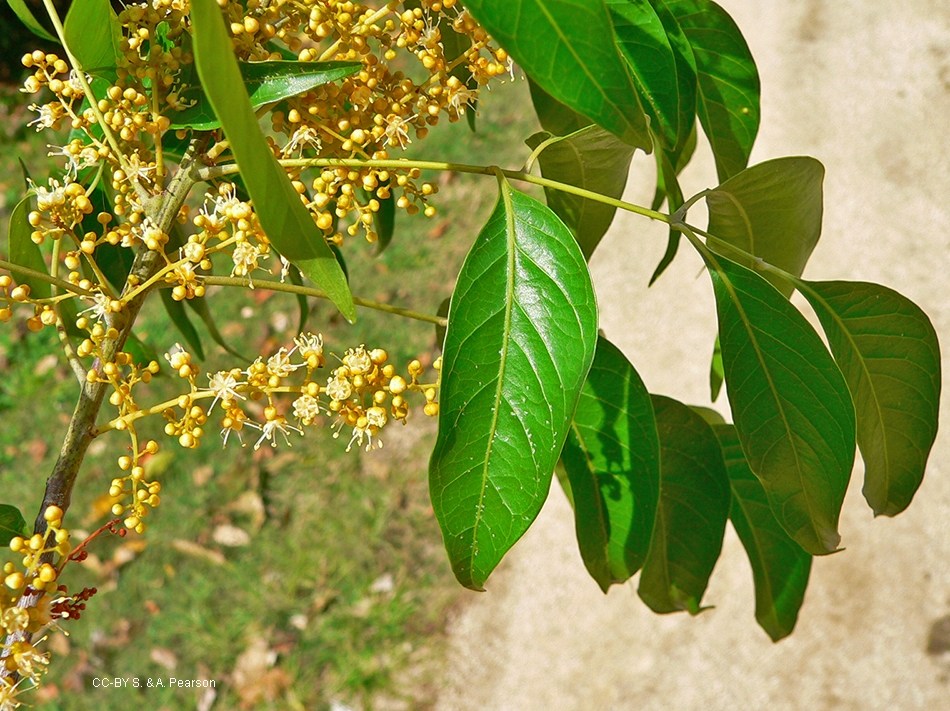Australian Tropical Rainforest Plants - Online edition
Lepiderema punctulata (F.Muell.) Radlk.




Radlkofer, L.A.T. (1924), Repertorium Specierum Novarum Regni Vegetabilis 20: 30
Terminal buds hairy and sometimes viscid. New growth pale pink. Leaves alternate, compound, with 6-10 opposite or sub-opposite leaflets, occasionally alternate, paripinnate; leaf axis or rhachis with a terminal process or appendage (sometimes indistinct). Stipules absent. Petiole 2.5-8.5 cm long; petiolules 0.6-1.2 cm long, swollen at base. Leaflet blades ovate, ovate-oblong, elliptic, 3.5-10 cm long, 1.5-4 cm wide, base obtuse becoming attenuate where lamina is decurrent to petiolule, often asymmetrical, margin entire, undulate (rarely toothed in juveniles), apex acute to acuminate. Leaves glabrous, with 8-12 lateral veins, oil dots visible with magnification. Domatia absent.
Inflorescence functionally unisexual and monoecious, axillary or ramiflorous, racemose, often in fascicles (with racemes arising from the same point along a branch) or on short lateral branches, or paniculate. Pedicels sometimes viscid. Flowers slightly zygomorphic, ± 5-merous, 4-5 mm diameter, ± gland-dotted. Sepals 5, unequal, shortly connate at base or free, broadly elliptic or ovate to suborbicular, 3 longest c. 3 mm long, margin sparsely ciliate, orange or green. Petals 3-5, subobovate, c. 2 mm long, free, without scales, glabrous, white to cream. Male flowers with 8 stamens, staminal filaments strongly exserted 3.5-4 mm long, densely hairy in bottom half; disk glabrous; rudimentary ovary present. Female flowers with eight staminodes, not exserted; ovary 3-locular, surrounded by a yellow or greenish-yellow disk; stigma sessile.
Fruit a 3-valved capsule, globose to slightly obcordate or obovoid in outline, shallowly 6-lobed, about 0.8-1.2 cm long, 1.0-1.2 cm in diam., calyx lobes not persistent at the base. Green when immature becoming orange-red at maturity. Seeds 3, glossy brown, usually partially enclosed in a yellow aril up to or over halfway.
Features not available.
This profile information and associated coding has been adapted from Cooper & Cooper (2004), Harden et al. (2014) and Reynolds (1982, 1985).





